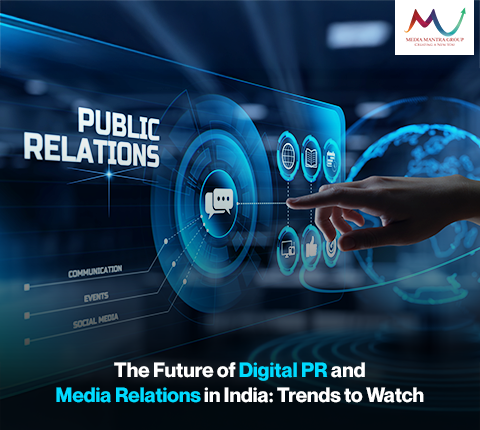18
JUL 2025
A few months ago, I was speaking with a friend who runs communications at a mid-sized fintech company. Over coffee, she admitted something I’ve heard echoed more and more lately. She said, “Traditional PR doesn’t work the way it used to. Our audience isn’t waiting for a magazine quote, they’re already forming opinions in real-time.”
That, in a nutshell, is where we are now. The nature of digital PR and media relations in India has fundamentally changed, and it’s still evolving. Let’s get into what the future holds.
1. Less Polished Language, More Conversation
If you look around, you’ll see a noticeable shift that polished and formal language of traditional PR is losing its grip. People want real conversation. The Gen-Z wants to back the brands that are doing the talk that are authentic. If a brand is addressing a flaw or responding to criticism, the tone should be honest, direct, and maybe a little vulnerable.
PR professionals who can craft that kind of narrative will stand out. The best digital PR and media relations in India are more about connection they are making rather than perfection.
2. The Local Factor
A growing trend is hyper-localization. If your brand talks only in English and only to metro-city media, you’re missing half the country. Audiences are consuming content in Hindi, Tamil, Bengali, Marathi, you name it. Regional influencers and media platforms are booming.
The PR strategies that win tomorrow will be built on cultural nuance and regional storytelling. A campaign that feels rooted in Lucknow might fall flat in Chennai and vice versa.
3. The Blurred Line Between Influencer and Journalist
The truth is Instagram creators and LinkedIn thought leaders are today’s journalists. A 90-second product review on YouTube can generate more sales than a quarter-page newspaper ad. The line between traditional media and influencer media is all but gone. That said, the approach has to evolve. Brands must do their homework and choose people who align with their values, not just their reach.
This is where digital PR and media relations in India must be strategic with the aim of building credibility.
4. Crisis Management is the New Core Service
A single customer tweet, a misunderstood ad, or a leaked email, it doesn’t take much for a reputation to slip. The smart brands have a plan. The smarter ones have a partner.
Working with a seasoned crisis management PR agency in India gives brands more than protection, offers perspective. When you’re inside the storm, it helps to have someone who’s weathered a few already.
These agencies shape narratives when emotions are high and time is short. Having a crisis management PR agency in India on standby is not optional anymore, it’s essential.
5. Analytics Will Change the Game
More PR teams are becoming fluent in data (and they have to). Media coverage alone doesn’t cut it anymore. Brands want to know how stories are performing: Are people clicking through? Sharing? Trusting?
The agencies that can link storytelling with numbers will lead the next decade of digital PR and media relations in India.
Before You Go
One crisis management PR agency in India that is making strong waves is Media Mantra. Known for its steady hand during brand crises, it has helped several reputed names in India navigate rough waters without losing public trust.
The world of PR is changing fast. But the ones who focus on authenticity, agility, and accountability? They’ll do just fine.


